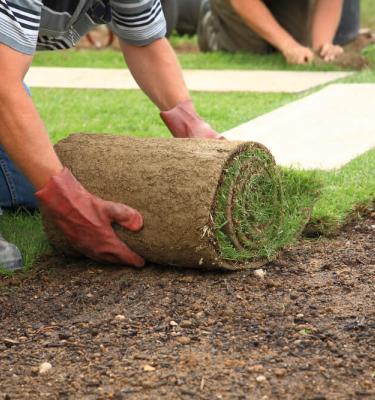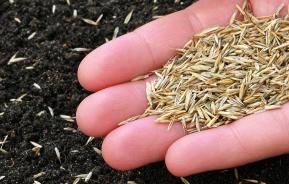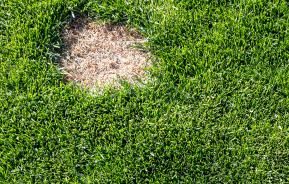When is the best time to lay lawn turf?
The best time for laying turf in the garden is spring when growth will be optimum and mid-autumn, when the soil is still warm from the summer, but the weather is cool and wet. However, you can lay turf almost any time during the year, provided the ground isn’t waterlogged or frozen. When laying turf in summer, you’ll need to water it regularly, especially during dry spells. Just remember to always use water wisely.
Laying the turf itself is relatively quick, but it’s worth spending time preparing your soil beforehand. If possible, give yourself a few weeks to prepare the area for your lawn before you lay turf. The more effort you put into preparation, the better the end result will be.
Recommended tools for laying turf
To lay turf effectively, you will need the following equipment:
- Wheelbarrow
- Rake
- Spade or fork
- Long knife
- Boards or scaffold planks
- Contact weedkiller
- Water supply or garden hose, ideally with a sprinkler attachment
- Topsoil or soil improver
- Turf
If you’re preparing a large area, you may need to use a rotavator to dig it over and a turf cutter to remove old turf.
How to level soil before laying turf
Start preparing the area a few weeks before you plan to lay turf. The aim is to create a level surface with a light, crumbly soil texture and a layer of 100-150mm (4-6in) of good topsoil.
If your soil is already in good condition, for example if you’re turfing over a border that has had compost regularly added to the soil, then you simply need to spread sufficient new topsoil to the depth needed, then rake and level it.

When working with poor soil, such as when replacing an old, tired lawn, it’s best to dig soil improver into the soil instead, to improve its structure and drainage. As a rough rule of thumb, use one 50-litre bag of soil improver per square metre of soil. Heavy clay soils will need more soil improver than light sandy soils.
Preparing the ground for turf: A step-by-step guide
Step 1: In preparation for laying turf, strip off any old turf. To strip small areas, slide the blade of a spade under the roots of the grass and remove the turf in sections. This can be hard work, so for clearing large areas, use a turf cutter instead. If you have space in your garden, pile up the discarded sections of old turf, grass sides together, and leave them to break down over several months – they make excellent compost.
Step 2: Clear all weeds, either by hand weeding or by using a contact weedkiller like Roundup Speed Ultra or a special lawn weedkiller. As with any chemical product, always read the instructions before using. Don’t use a residual weedkiller, as these can stay in the soil for several weeks and will stop the new turf rooting.
Step 3: Dig the soil over to a depth of 20-25cm (8-10in). Break up clods and remove all stones and other debris.
Step 4: If adding topsoil, rake the soil to level it, then spread the topsoil to a depth of 100-150 mm (4-6 in) and rake level again, ready for turf laying.
Step 5: If using soil improver, dig it in and leave it to settle for at least a week or two after digging. After the soil has settled, weed again to clear any new weeds that have appeared. Tread gently over the whole area to firm the soil, then rake in different directions to produce a level surface with a light, crumbly texture. You may need to repeat the treading and raking process a few times to get a good level surface. Finally rake in a general-purpose fertiliser at 70g/sq.m, ready for turf laying.
How to lay turf

Step 1: Ideally, lay your turf within 24 hours of delivery. It’s important to buy your turf when you’re ready to use it. If you have to store turf for a day or two, keep it somewhere cool, unroll it to stop the grass discolouring and don’t let it dry out – make sure you keep it watered.
Step 2: Start by laying a row of turf along one edge of the area, then work outwards. When laying turf, work facing the un-turfed area, to avoid making dips in the prepared soil surface. Put boards down on new-laid turf to create a walkway to work off.
Step 3: Lay the turf sections in a staggered pattern, as if laying bricks for a wall.
Step 4: Make sure the turf edges are closely butted together with no gaps between them to allow for shrinkage. Use the knife to cut off excess pieces of turf.
Step 5: Water the finished lawn thoroughly.
New turf aftercare
Avoid walking on your new lawn for two to three weeks while it is settling in.
It’s vital that the turf doesn’t dry out while it is rooting through into the soil, so water daily for the first two weeks if the weather is dry. Check that the water is getting through to the soil by lifting up a corner of the turf. Once the lawn has established and the turf can’t be lifted, water the lawn once a week during dry periods in summer.
When the lawn has grown to about 5cm (2in) high, mow it on a high setting for the first cut.
If you’ve always dreamed of having the perfect lawn, now’s the time to lay your own, ready for those sensational summer parties and family games in the garden.
Frequently asked questions about laying turf
How much topsoil do I need under turf?
Before laying your turf, if you’re using topsoil you should spread it to a depth of 100-150mm (4-6in). Rake it level, ready for your turf laying.
Should you water your turf before you lay it?
You don’t want your turf to dry out before you lay it. You should lay it within 24 hours of it being delivered – any longer than this and it can dry out and become discoloured. Water it to stop this happening. You’ll also want the soil to be moist when you lay new turf – you want moist not soggy or damp soil. This is especially important to protect tender roots if you’re laying your turf in hot weather.
Can you lay turf over old grass?
It isn’t recommend to lay turf over old grass. It can stop the new turf from rooting well, and weeds can also come through the new turf. When laying turf in your garden it’s important to prepare the soil properly following the above advice.
Ready to learn how to look after your lawn once it’s been turfed? Read our lawn care tips and see them in action on our YouTube channel.













